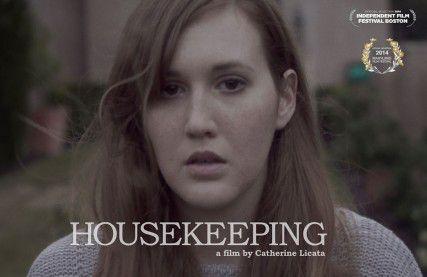Darwinian theory suggests that humans are evolutionarily evolved from primates and share many bodily structures and functions with them. A new study suggests that human emotions may be connected to primates as well.
The study, published in the December edition of Proceedings of the National Academy of the USA, has assessed the well-being of apes and demonstrated that they share a U-shaped happiness curve with humans.
“We are all just large apes in jeans when it comes down to it,” Andrew Oswald from the University of Warwick said in an email interview.
This U-shaped curve, according to the study, illustrates the theory that as children, well-being is at its peak. Happiness falls as humans get older, hitting rock bottom — the familiar mid-life crisis — and then rises again as we reach old age.
This suggests that the stress and unhappiness that people often suffer from is not only normal, but may actually be a biologically based, predictable part of the clockwork of human life.
Although the cause for the U-shape remains uncertain, Oswald and other scientists said that they have their own theories regarding its existence.
U-Shaped Happiness in Humans
Multiple studies regarding happiness have been performed on humans in the last two decades, including a key paper that was published in 2007 by Oswald and David Blanchflower.
They obtained data through surveys that asked questions about how participants felt in terms of happiness.
To take into account different ethnic groups, 500,000 Americans and Europeans were studied, which allowed researchers to determine whether the U-shape was present in humans regardless of their different backgrounds.
The U-shape was found, according to the study, in American and European male and female participants, and the results demonstrated that a human reaches minimal happiness in his or her 40s.
U-Shaped Happiness in Apes
To test the possible biological connection to happiness, the new study continued Oswald’s well-being research on our close relatives, the apes.
The researchers studied three samples totaling a number of 508 great apes, including two samples of chimpanzees and one sample of orangutans, at a variety of ages, according to the study. The apes considered were chosen from different zoos and sanctuaries in Japan, Canada, Australia and Singapore.
Their well-being was calculated by raters — including zookeepers, volunteers, caretakers and researchers — using a modified questionnaire based on the surveys used in the earlier human-based study. The four-item questionnaire asked the caretakers to evaluate the animal’s happiness based on their current mood, sociability and goals.
Similar to the study on humans, a team of primatologists and psychologists took into account the sex and the type of ape, and found that all three samples exhibited a U-shaped well-being curve.
“We honestly didn’t think we would find a U-shape when we looked at data at apes,” Oswald said. “It was an unforgettable moment when the data came out.”
After this study, it is possible that society affects a human’s happiness up to a point, but our close biology to apes may be the better explanation, Oswald said.
“It seems the U may have a biological cause, Oswald said. “Or perhaps apes and humans have exactly the same social processes in some way that leads to the U.”
What Causes the U-Shape?
Although he was unsure about the cause of this pattern, Oswald listed three possible explanations for the curvature of happiness in his earlier paper.
The first theory, according to the paper, is that we adapt to our strengths and weaknesses with age, and the mid-life crisis involves the realization that childhood aspirations are unattainable. The second is that happier people live longer, and the U-shape is showing a selection effect. The third is that as we see others die throughout our life, we value our blessings and life more.
The discovery that the U-shaped happiness curve is not strictly human implies that the origins of the U-curve might actually lie in our biology.
“We hoped to understand a famous scientific puzzle: why does human happiness follow an approximate U-shape through life?” Oswald said. “We ended up showing that it cannot be because of mortgages, marital breakup, mobile phones or any of the other paraphernalia of modern life. Apes also have a pronounced mid-life low, and they have none of those.”
The paper on apes stated that the changes in happiness may actually be related to changes in the brain that depend on age or on the theory that the happier live longer.
Boston University associate professor of psychology Catherine Caldwell-Harris said the biological theory is opposite of the dominant explanation for why negative feelings decrease as people grow older.
She said there is a theory that instead focuses on the increased skill and wisdom of older adults.
“According to the socio-emotional selectivity theory,” she said, “older adults are aware that they have a shorter lifespan ahead and choose to use the emotional coping skills they have developed across their life to prioritize feeling good.”
Caldwell-Harris said this ability is adaptive because younger adults learn that they have more to lose by poor decisions and must be harm-avoidant.
Reactions from the BU community
Students said they are interested in the study, and made their own guesses as to why the happiness curve exists.
College of Communication junior Katie Lohec said she was interested in the further connection between humans and apes.
“It’s an extremely interesting connection,” she said. “I took an introduction to biological anthropology class and was amazed by the number of connections like this that we share with apes.
It would be interesting to know in what ways our definition of happiness is similar to that of apes.”
College of Arts and Science junior Emily Cardenas said she was skeptical about the existence of the U-shaped happiness curve.
“It honestly depends on the situation you’re coming from,” she said.
She said our environment as children may affect our future happiness.
“Someone could have had the worst childhood, but when they’re older and out on their own, it’s a straight line up from there,” she said. “It could also be the opposite, where things start out well, but it’s a straight line down.”
Samantha Anders, a CAS freshman, agreed with the outcome of the study, asserting that the existence of the curve is valid.
“It sounds pretty accurate to me,” she said. “When you’re young, you don’t have as much responsibility and when you’re old you’ve already put in all that hard work. When you’re middle-aged, you’re still doing a lot.”
There may also be future implications of this study based on our further connection to apes, Oswald said. He said he expects researchers to take increased interest in primates.
“I expect more social scientists to work on primate data in the next few decades,” he said.
























































































































